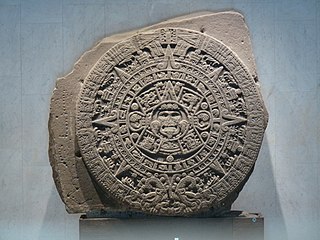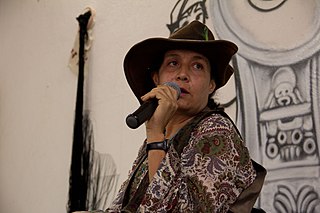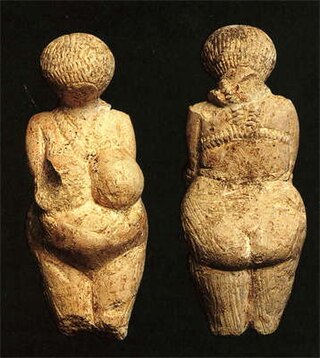This is a list of museums in Argentina .
| Name | Location | Type | Summary |
|---|---|---|---|
| Academia Nacional del Tango de la República Argentina | Buenos Aires | Dance | History of the tango |
| Ángel María de Rosa Municipal Museum of Art | Junín | Art | |
| ARA Presidente Sarmiento | Buenos Aires | Maritime | 1890s training ship |
| ARA Uruguay | Buenos Aires | Maritime | 1870s Corvette museum ship |
| Bernardino Rivadavia Natural Sciences Museum | Buenos Aires | Natural history | Dinosaurs, animals, plants, geology |
| Buque Museo Irigoyen | San Pedro | Maritime | Abnaki-class tugboat deployed in World War II |
| Buenos Aires Museum of Modern Art | Buenos Aires | Art | Contemporary and modern art |
| Buenos Aires Toy Museum | Buenos Aires | Toy | website, cultural and social history of Argentina through toys |
| Caraffa Fine Arts Museum | Córdoba | Art | Paintings and sculptures by renowned local artists |
| Carlos J. Gradin Museum of Archaeology | Perito Moreno | Archaeology | An Archaeological Museum, named after Carlos J. Gradin. [1] [2] [3] [4] [5] As of 2019, the building is still under construction. [6] |
| Casa Argentina del Arte Correo | Buenos Aires | Art | Mail art exhibitions and gatherings by national and foreign artists |
| Casa de Moneda Museum | Buenos Aires | Numismatic | Coins, medals, banknotes, operated by the Argentine mint |
| Casa Histórica de la Independencia | San Miguel de Tucumán | History | Colonial and independence history of Argentina |
| Casa Nacional del Bicentenario | Buenos Aires | History | History and culture of Argentina |
| Casa Rosada | Buenos Aires | Dance | Official executive mansion of Argentina, includes museum about the presidents of Argentina |
| Centro Cultural Recoleta | Buenos Aires | Art | Cultural arts centre with exhibits |
| Córdoba Historical Museum | Córdoba | History | City history, culture |
| Dr. Ángel Gallardo Provincial Natural Sciences Museum | Rosario | Natural history | Animals, plants, minerals, dinosaurs, fossils, anthropology |
| Dr. Julio Marc Provincial Historical Museum | Rosario | History | Includes archaeological artifacts, Spanish-American art, numismatics, pre-Columbian textile and silverwork crafts, weapons, furniture |
| Eduardo Sívori Museum | Buenos Aires | Art | Argentinian art |
| Ernesto de la Cárcova Museum of Reproductions and Comparative Sculpture | Buenos Aires | Art | Replicas of original sculptures from ancient Egypt, Chaldea, Mesopotamia and Greek |
| Evita Fine Arts Museum | Córdoba | Art | |
| Firma y Odilo Estévez Municipal Decorative Art Museum | Rosario | Art | Includes European paintings from the 17th to the 19th centuries, ivory objects, Spanish American silver, tapestries, rugs, glassware, porcelain and sculptures |
| Fortabat Art Collection | Buenos Aires | Art | Collection includes 19th century Argentine landscape, naturalist and naïf art, 20th century Argentine works, international art, Figurative art works |
| Francisco Moreno Museum of Patagonia | San Carlos de Bariloche | Natural history | Fossils, prehistory, Aboriginal culture and artifacts, regional history, Argentina's national parks |
| Hotel Castelar | Buenos Aires | History | Hotel with museum room dedicated to Spanish poet and dramatist Federico García Lorca |
| Hotel de Inmigrantes | Buenos Aires | History | History of immigration to Argentina |
| Juan B. Ambrosetti Museum of Ethnography | Buenos Aires | Ethnography | Archaeological and cultural artifacts from northwestern Argentina and Patagonia |
| Juan B. Castagnino Fine Arts Museum | Rosario | Art | European art, Argentine art of the 19th and 20th century, and works by Rosario artists until the 1930s |
| Juan Carlos Castagnino Municipal Museum of Art | Mar del Plata | Art | Paintings, sculptures, lithographs, photographs and other works |
| La Plata Museum | La Plata | Natural history | Dinosaurs, fossils, geology, animals, insects, evolution |
| MALBA: Museo de Arte Latinoamericano de Buenos Aires | Buenos Aires | Art | Latin American art from the onset of the 20th century to the present |
| Mar del Plata Museum of the Sea | Mar del Plata | Natural history | Features aquarium displays, collections of seashells, exhibits about oceanography |
| Municipal Museum of the City | Rosario | History | Local history, culture |
| Museo Carmen Funes | Plaza Huincul | Natural history | Dinosaurs |
| Museo de Arte Español Enrique Larreta | Buenos Aires | Art | Spanish art including medieval, baroque and Spanish Renaissance art, armor, tapestries, baroque decor, manuscripts, wood carvings, and French furniture |
| Museo de Arte Hispanoamericano Isaac Fernández Blanco | Buenos Aires | Art | Collection of Spanish and Latin American art particularly of the Cuzco School, including fine and decorative arts |
| Museo de Arte Popular José Hernandez | Buenos Aires | Art | website, historic and contemporary folk art |
| Museo de Esculturas Luis Perlotti | Buenos Aires | Art | website, sculpture by Luis Perlotti and others |
| Museo de los Niños Abasto | Buenos Aires | Children's | website |
| Museo del Automóvil Club Argentino | Buenos Aires | Automotive | Historic automobiles, history of cars in Argentina |
| Museo del Bicentenario | Buenos Aires | History | website, history of Argentina from the May Revolution to the present and beyond |
| Museo del Cine Pablo Ducrós Hicken | Buenos Aires | Cinema | website |
| Museo Evita | Buenos Aires | History | website, life of Evita Peron |
| Museo Histórico Sarmiento | Buenos Aires | History | Life of President Domingo Faustino Sarmiento and the Generation of '80 |
| Museo Juan Manuel Fangio | Balcarce | Automotive | Motor racing cars, dedicated to Formula One driver Juan Manuel Fangio |
| Museo Mitre | Buenos Aires | History | Argentine history and legacy of President Bartolomé Mitre |
| Museo Nacional de Aeronáutica de Argentina | Buenos Aires | Aerospace | History of aviation and the Argentine Air Force |
| Museo Nacional de Bellas Artes (Buenos Aires) | Buenos Aires | Art | Collection includes works from the Middle Ages up to the 20th century |
| Museo Pueyrredon | Acassuso | Multiple | Life of Juan Martín de Pueyrredón and his family |
| Museum of Contemporary Art of Rosario | Rosario | Art | Contemporary art |
| Museum of Foreign Debt | Buenos Aires | Economics | History of the 1998–2002 Argentine great depression resulting from borrowing money from abroad |
| Museum of Memory | Rosario | History | information, Argentina’s history during the military coups that took place between 1976 and 1983 |
| Museum of Paleontology Egidio Feruglio | Trelew | Natural history | Fossils of Patagonia, geology |
| Museum of Water and Health History | Buenos Aires | Technology | Historic water works building with equipment |
| National Historical Museum (Argentina) | Buenos Aires | History | History of Argentina, exhibiting objects relating to the May Revolution and the Argentine War of Independence |
| National Museum of Decorative Arts, Buenos Aires | Buenos Aires | Historic house | Mansion house that includes furniture, painting, sculpture, East Asian decorative art |
| National Museum of the Cabildo | Buenos Aires | History | Colonial era government building with paintings, tools, furniture and clothing related to the 1810 Revolution |
| National Naval Museum of Argentina | Tigre | Maritime | website, Museo Naval de la Nación |
| Paz Palace | Buenos Aires | Military | Weapons, cannons, uniforms, equipment, regalia, banners |
| Planetario | Buenos Aires | Science | Planetarium with exhibits about space, fossils |
| Rocsen Museum | Nono, Córdoba | Multiple | Over 18,000 pieces from different collections |
| Samay Huasi | Chilecito | Multiple | Home of writer, teacher and politician Joaquín V. González, includes art gallery, collection of minerals, animals, plants and native artifacts |
| San Carlos Convent | San Lorenzo | History | 18th century convent by the site of the Battle of San Lorenzo |
| San Martín National Institute | Buenos Aires | History | Life and legacy of General José de San Martín |
| Stock Exchange Museum | Rosario | History | information, website, origins of the regional grain market |
| Tigre Municipal Museum of Fine Art | Tigre | Art | |
| Timoteo Navarro Museum of Art | San Miguel de Tucumán | Art | |
| Provincial Museum of Fine Arts "Dr. Pedro E. Martínez" | Paraná | Art | |









